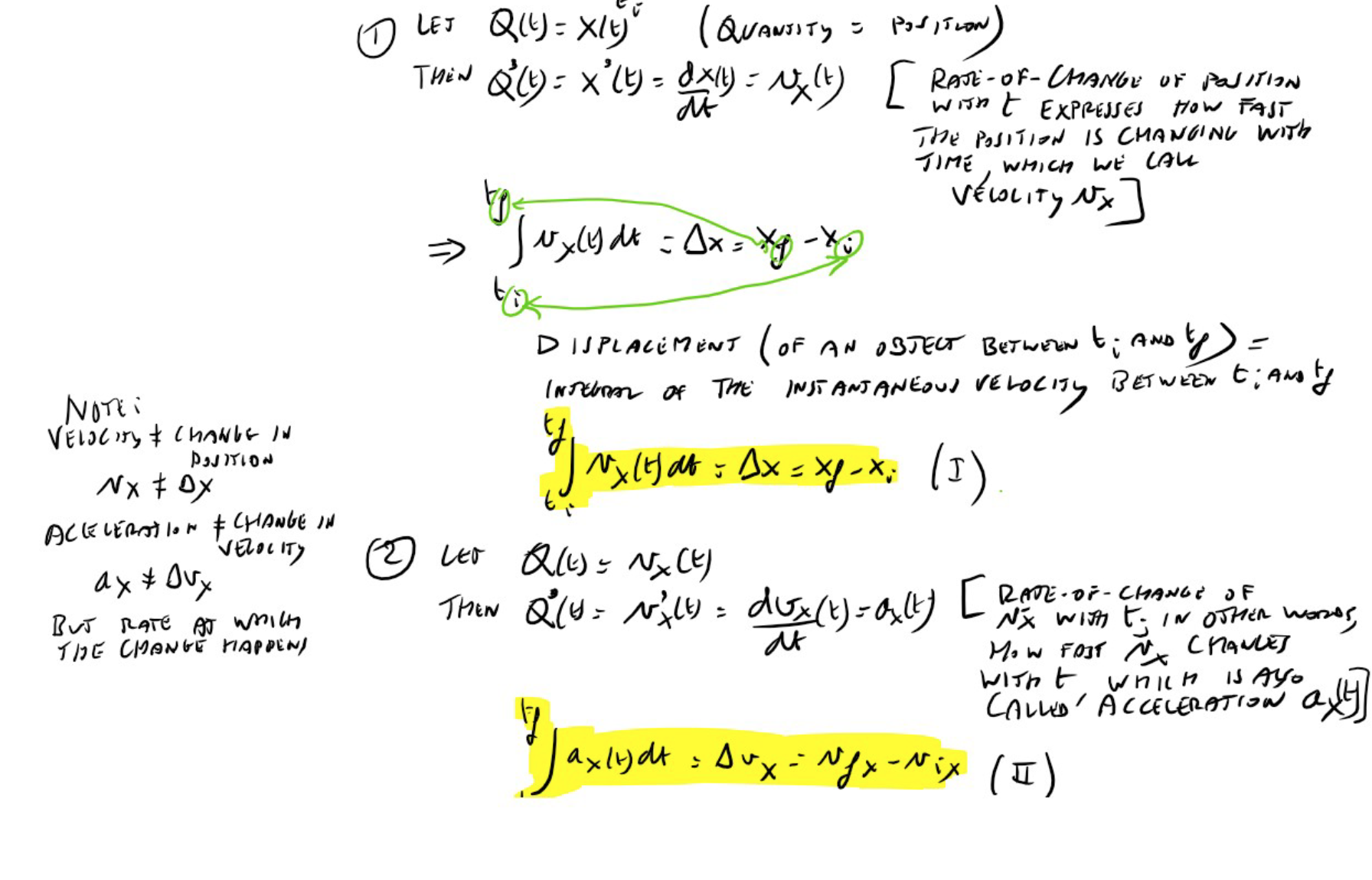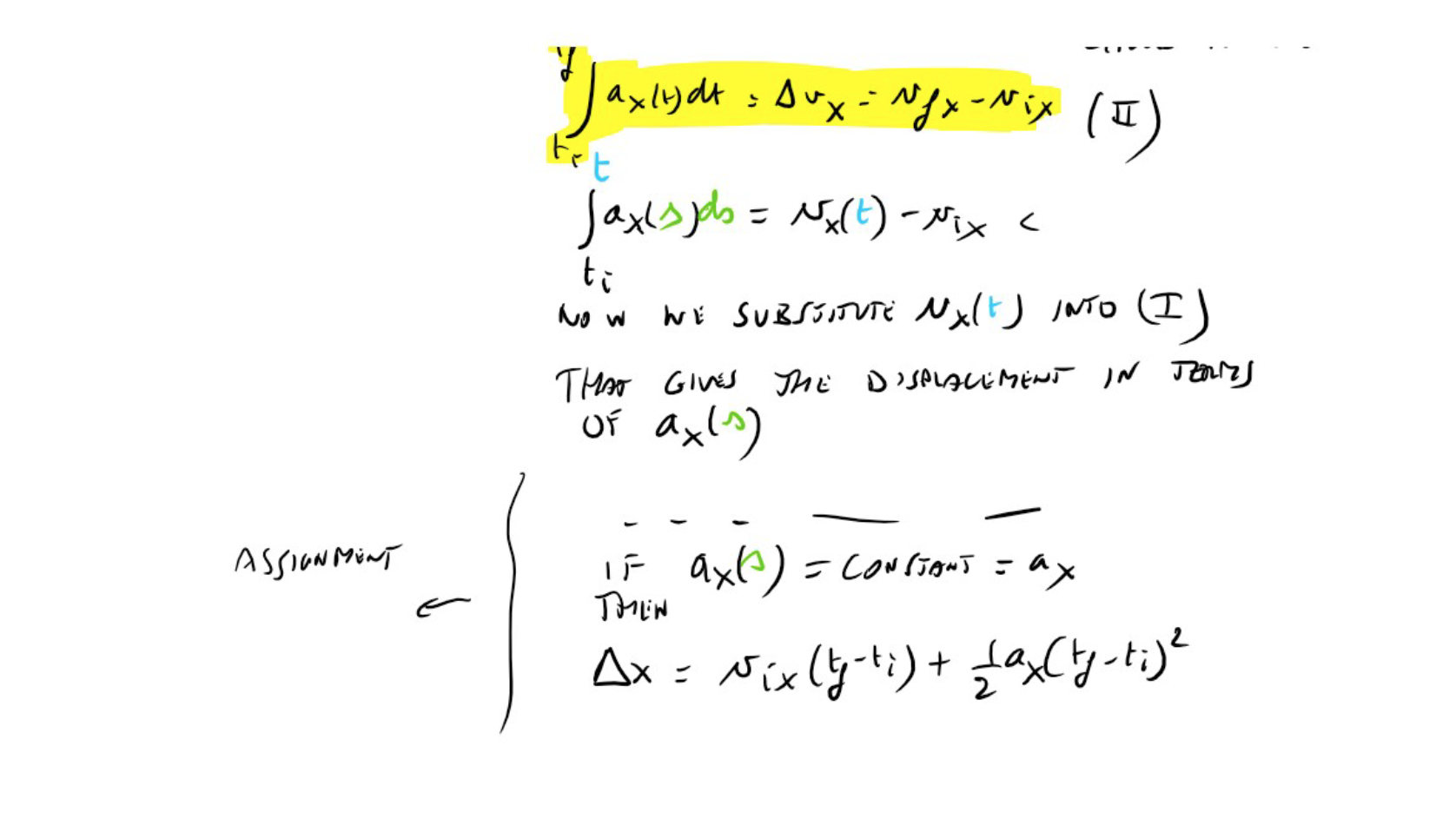Question
Fundamental theorem of calculus and its application to 1D kinematics 1) Substitute the velocity vx(t) from formula (II) into formula (I) and write out the
Fundamental theorem of calculus and its application to 1D kinematics
1) Substitute the velocity vx(t) from formula (II) into formula (I) and write out the resulting formula for Delta(x). The displacement Delta(x) can be calculated from the knowledge of the initial velocity vix and the acceleration function ax(s). You should find the term in vix separated from a double integral term in the acceleration.
2. Using the previous formula with the double integral of ax(s), show that for a constant acceleration ax, the double integral becomes the familiar (1/2)ax(tf-ti)^2 formula you have seen in kinematics in PHYS120.


Step by Step Solution
There are 3 Steps involved in it
Step: 1

Get Instant Access to Expert-Tailored Solutions
See step-by-step solutions with expert insights and AI powered tools for academic success
Step: 2

Step: 3

Ace Your Homework with AI
Get the answers you need in no time with our AI-driven, step-by-step assistance
Get Started


